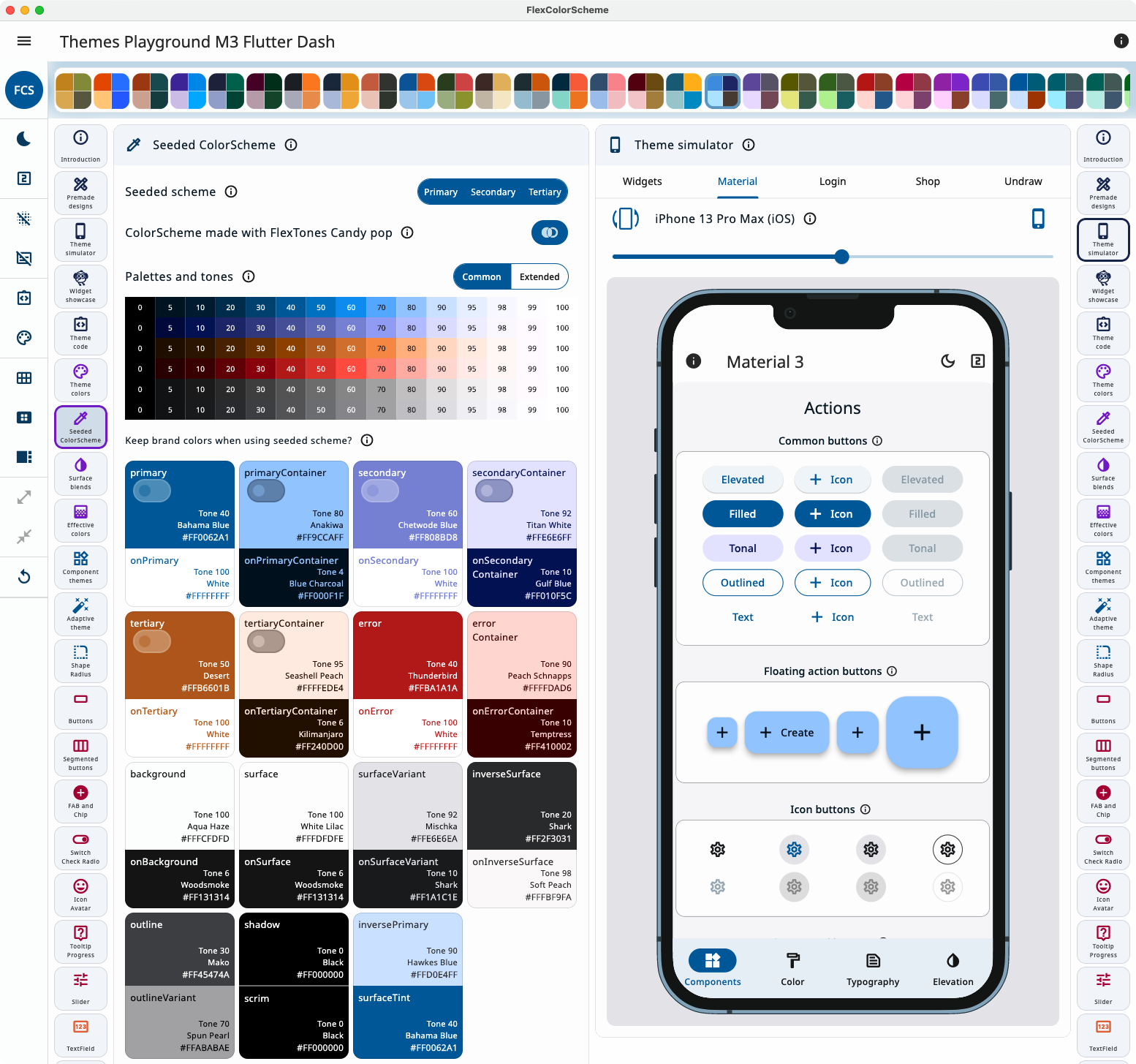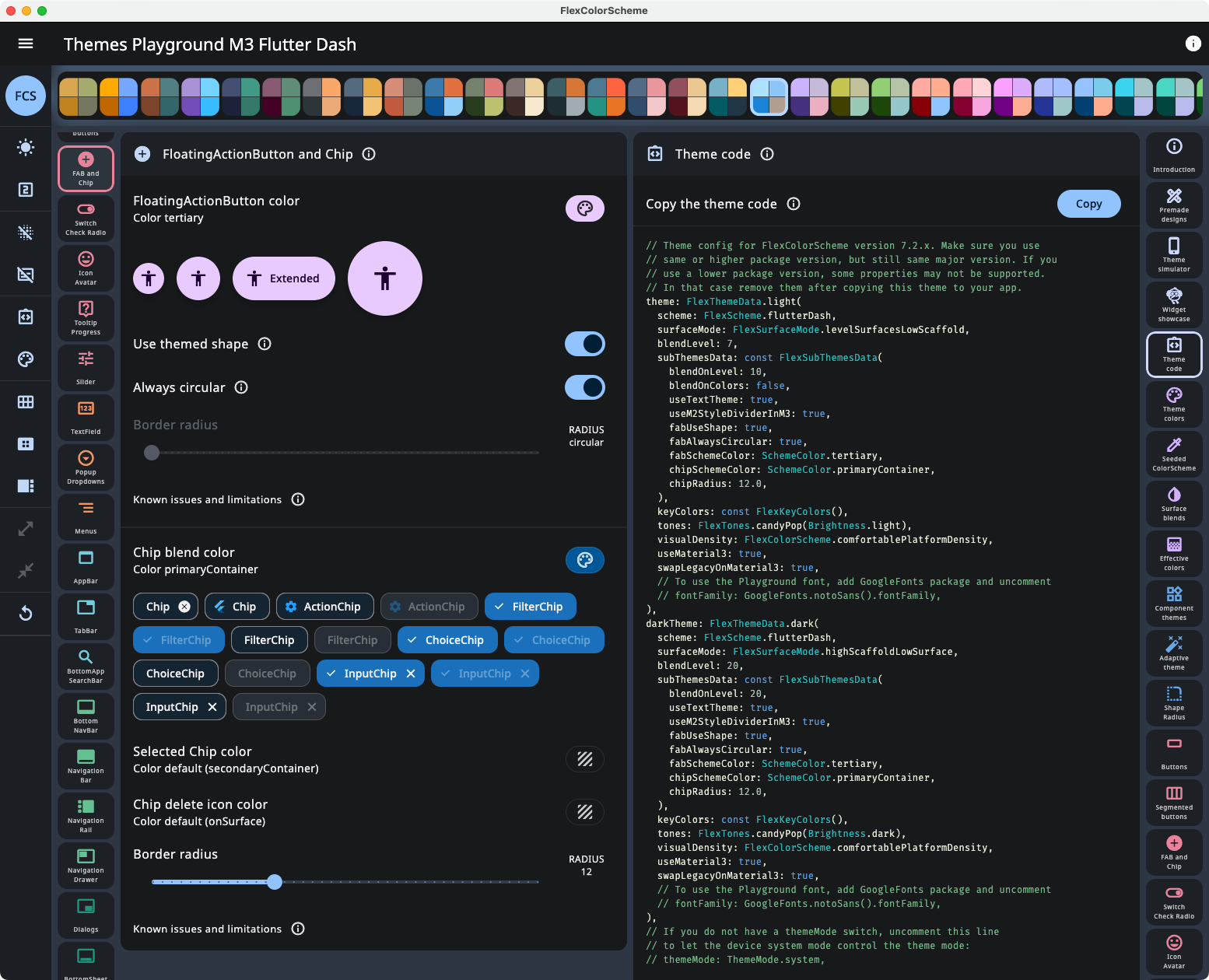Use FlexColorScheme to make beautiful Flutter Material Design themes. Apply optional surface blends, and use Material-3 seeded generated ColorSchemes. The returned themes are standard ThemeData objects, but very sophisticated ones. They are based on the same idea as Flutter's ThemeData.from(ColorScheme) and ThemeData(colorSchemeSeed) themes, but with many additional features. Choose from many pre-made designs or make your own. You can also use easy-to-configure component themes.
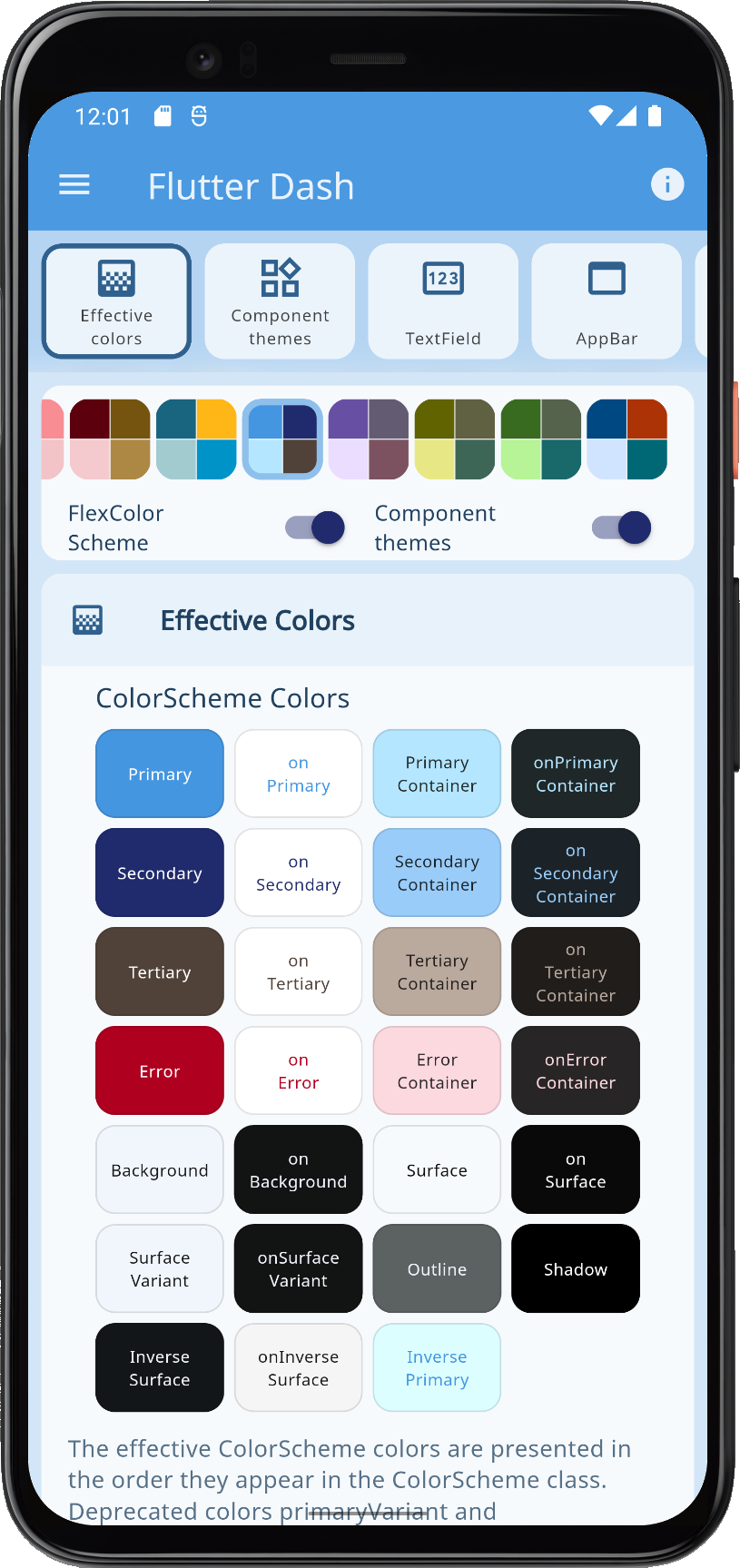 |
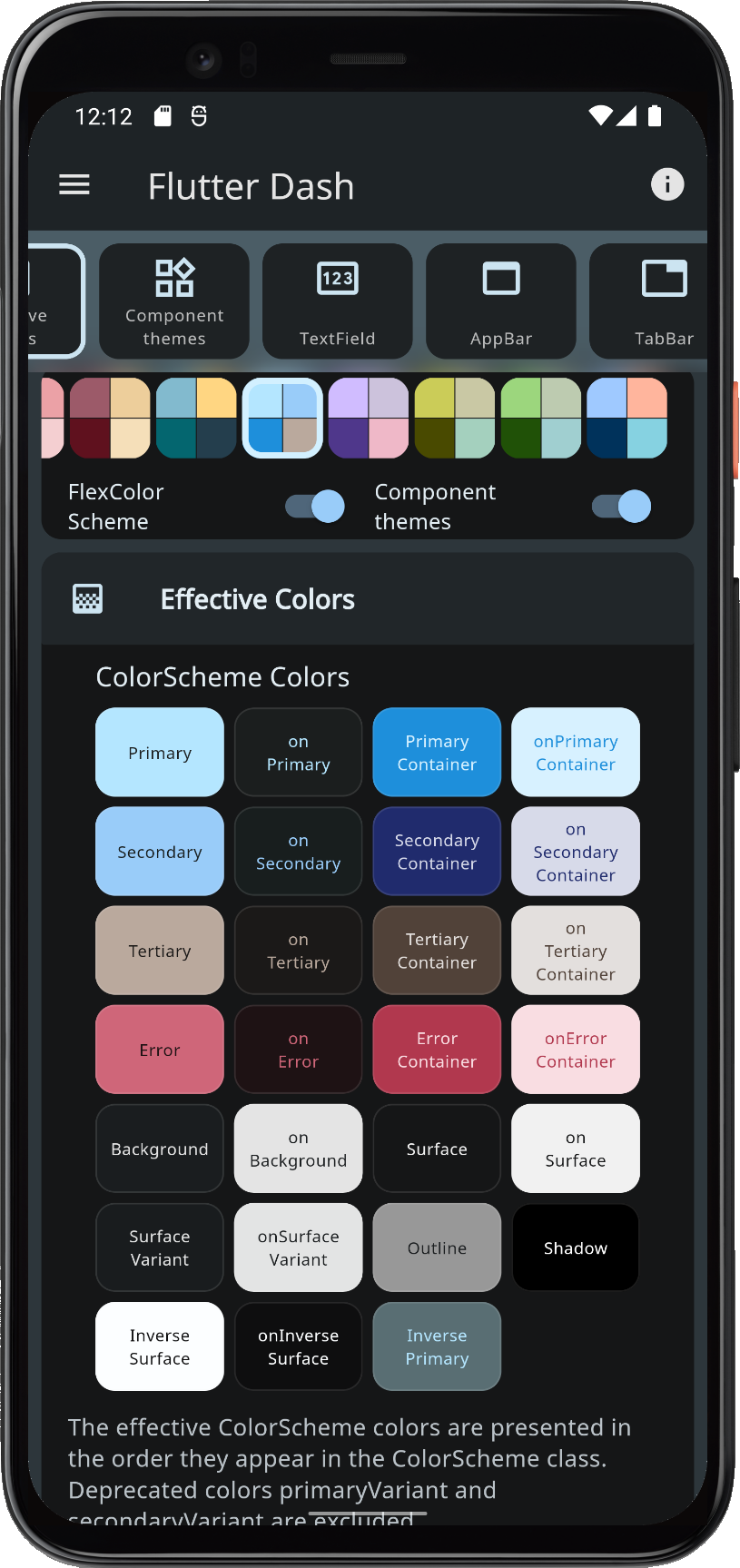 |
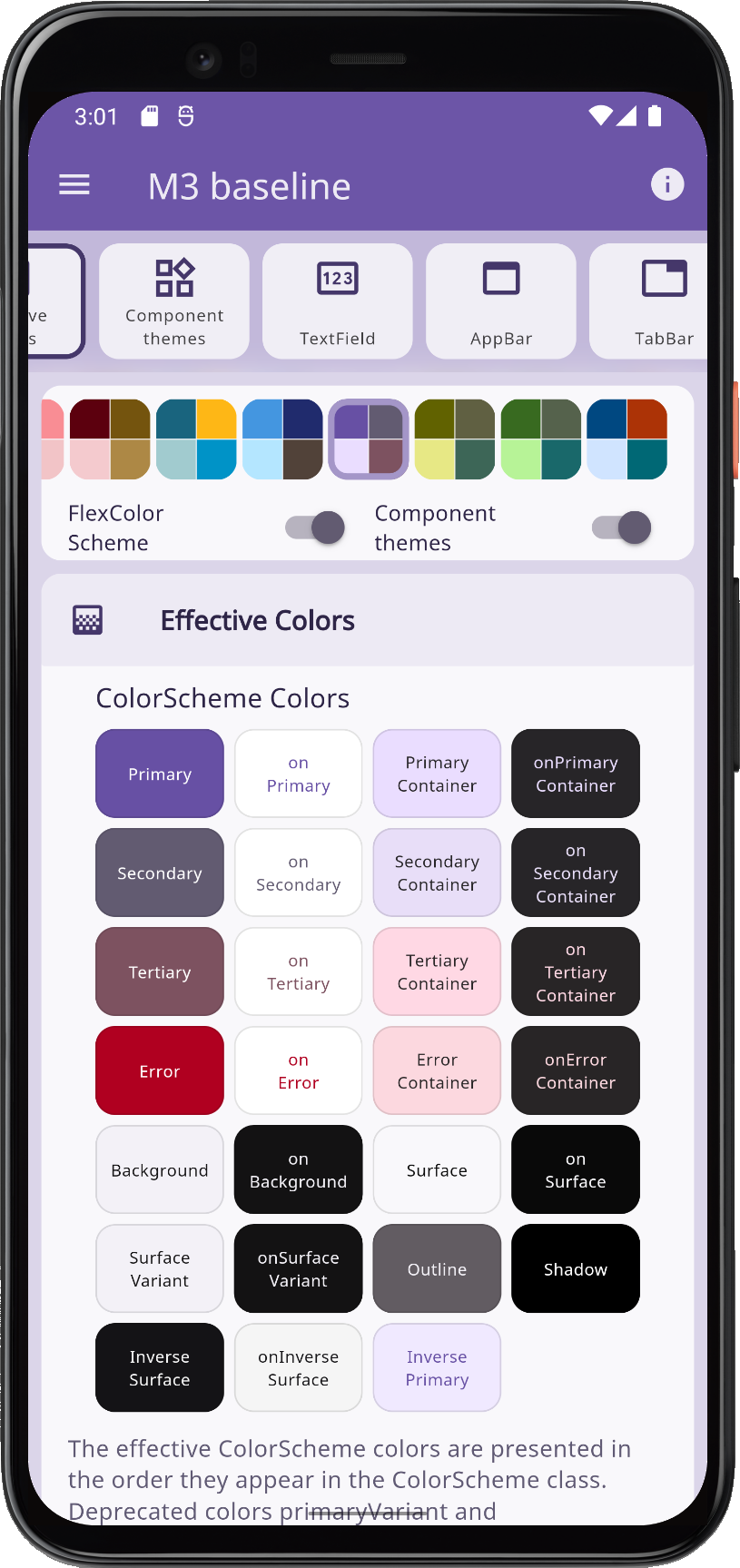 |
 |
When you theme a Flutter application in the intended manner, all built-in widgets use the colors of the ColorScheme in your theme. However, all Flutter's ThemeData factories misses a few details when it comes to direct color properties in ThemeDataitself. This applies in particular if you still use legacy Material-2 mode in Flutter. When you use the current default Material-3 mode, the color results and styles are much more consistent by default, with only a few colors in ThemeData not matching the defined ColorScheme colors.
FlexColorScheme ensures that all Flutter SDK UI components get themed completely by its ColorScheme and custom colors you provide. It also applies the ColorScheme colors to all legacy color properties in ThemeData. This ensures that all the direct colors properties in ThemeData match your ColorScheme. There are no surprising colors in ThemeData that do not match your ColorScheme. This applies regardless of if you use Material-2 or Material-3 mode.
You can also opt in on using FlexColorScheme's component theme customization features. By doing so, you can, for example, adjust the border radius on all UI widgets with a single property value.
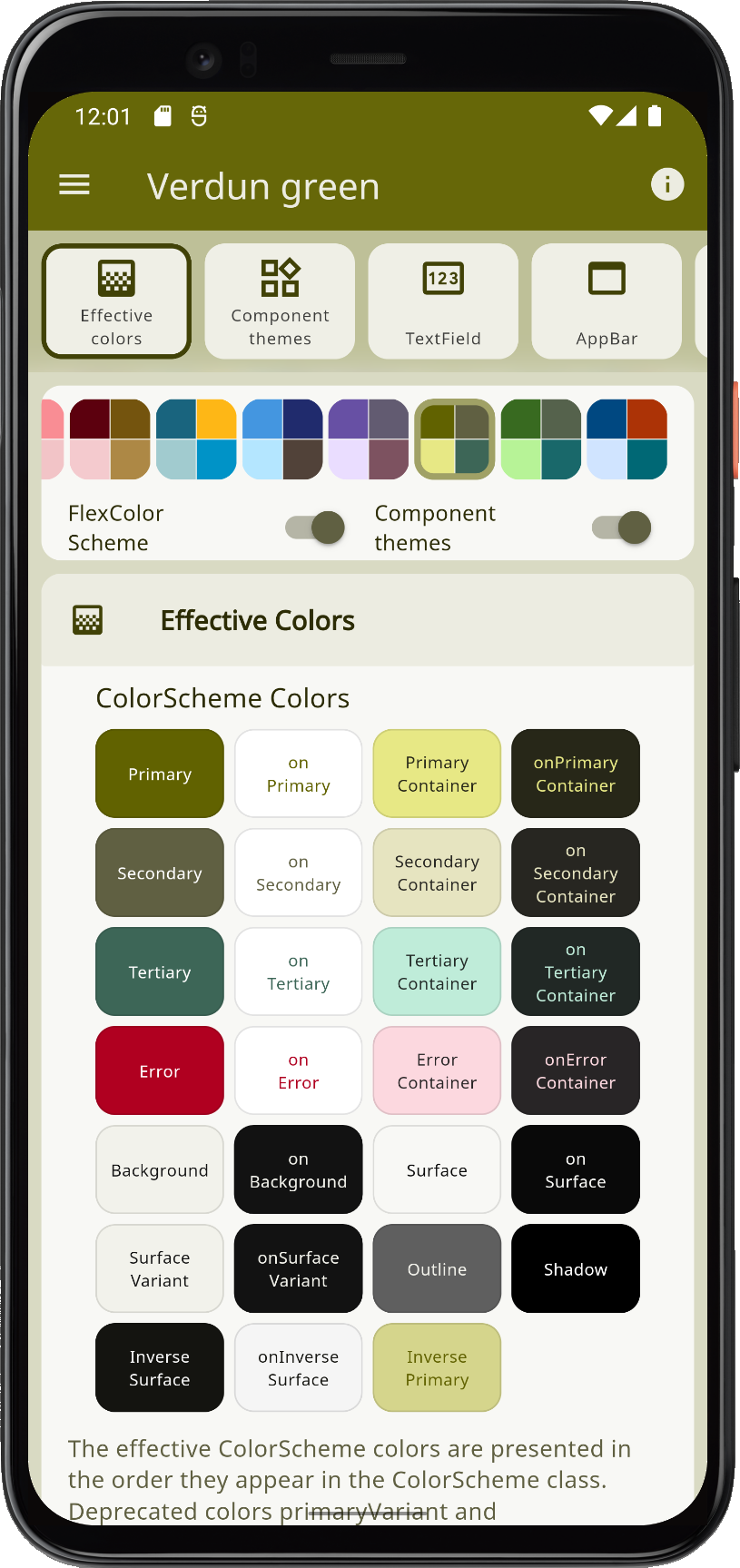 |
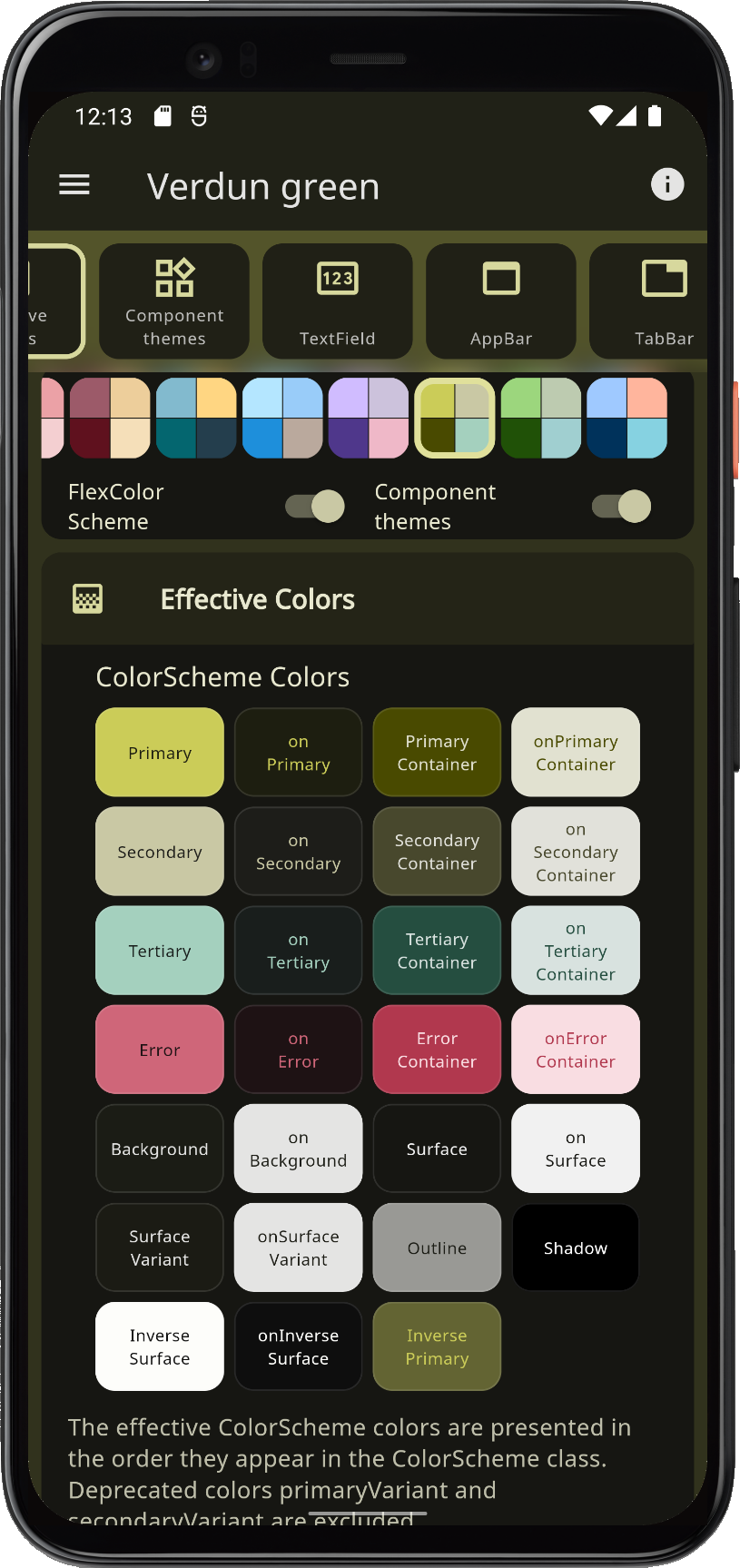 |
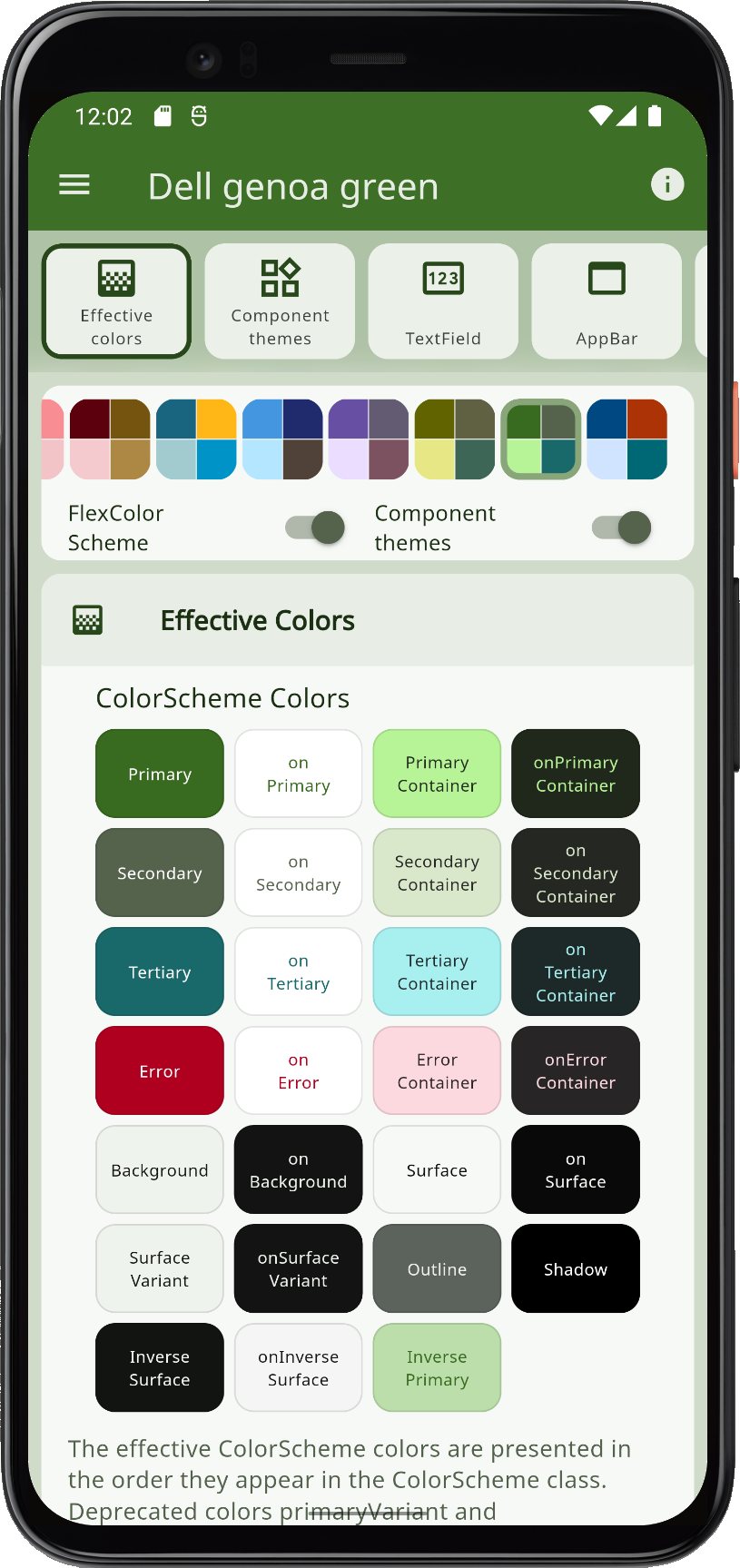 |
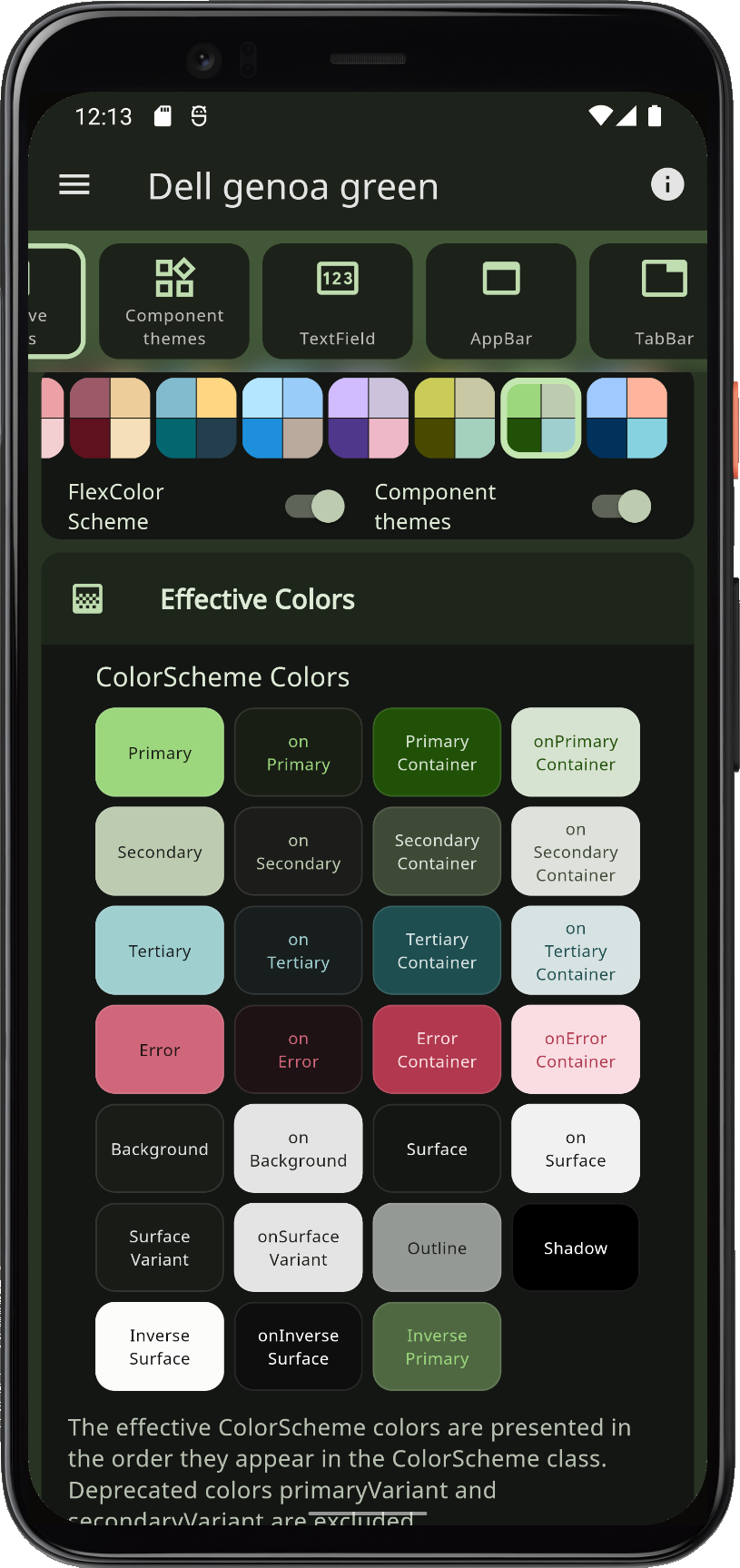 |
When you enable component themes in Material-2 mode, the border radius on components defaults to the Material-3 more rounded design. In Material-3, the radius varies by widget type, as specified by the Material-3 Guide. You can keep this or set the shared global widget radius to a value you prefer. You can also set the themed border radius per widget and override the defaults or the global radius value you defined.
As in Flutter's ThemeData, Material-3 mode is enabled by default in FlexColorScheme V8 and later. The Material-3 mode component theme defaults are far less opinionated than the Material-2 defaults. In FlexColorScheme V8 and later, enabling component themes use almost only Material-3 defaults as starting points for component styles and seeded ColorScheme generation. With the large number of component theme settings, you can quickly customize Material-3 to fit your application's design goals.
Since Flutter 3.7 and later, using Material-3 design is production ready. Some minor issues may always exist. Please refer to the FlexColorScheme docs known issues chapter for more information on the status of known theming issues in Flutter, and to which versions they apply.
 |
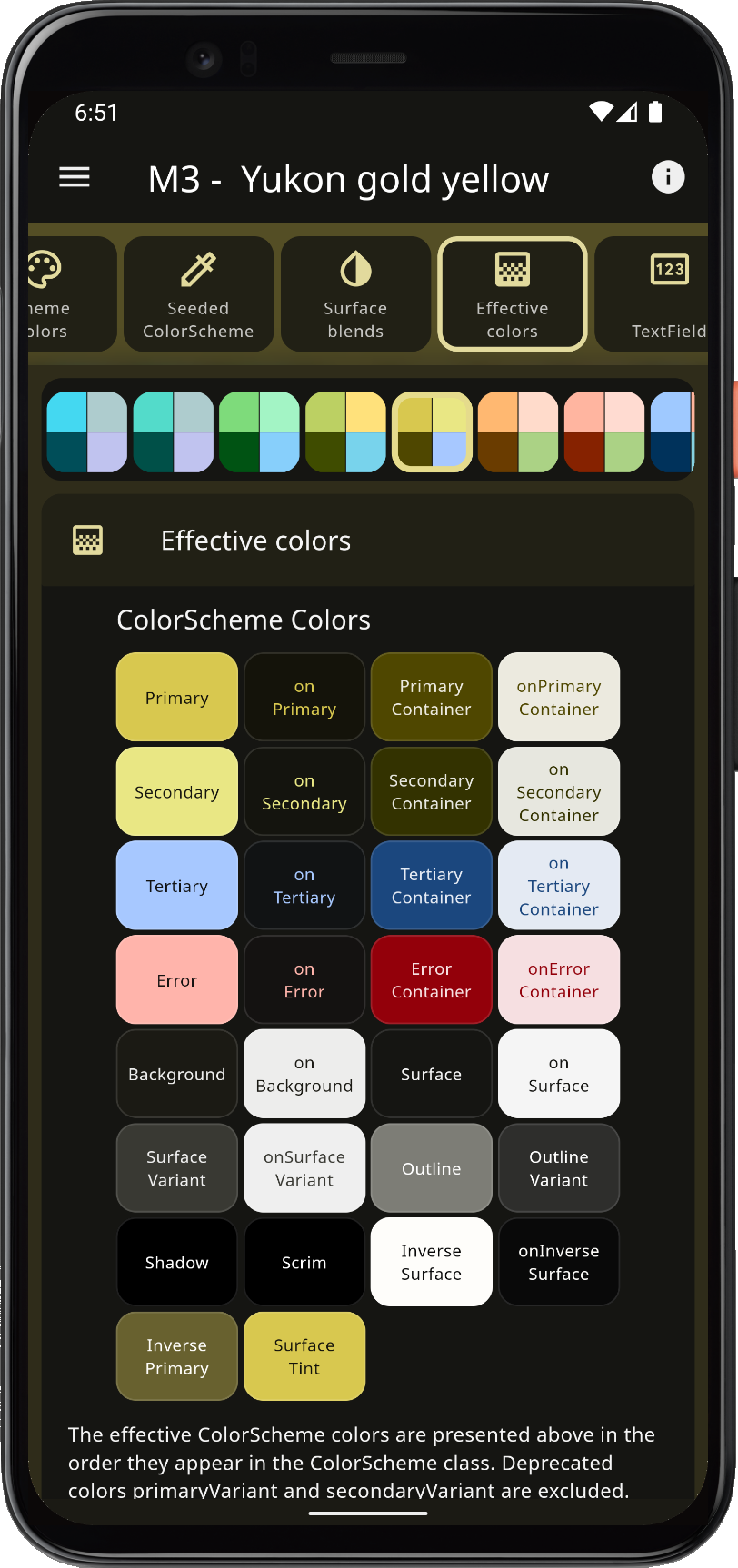 |
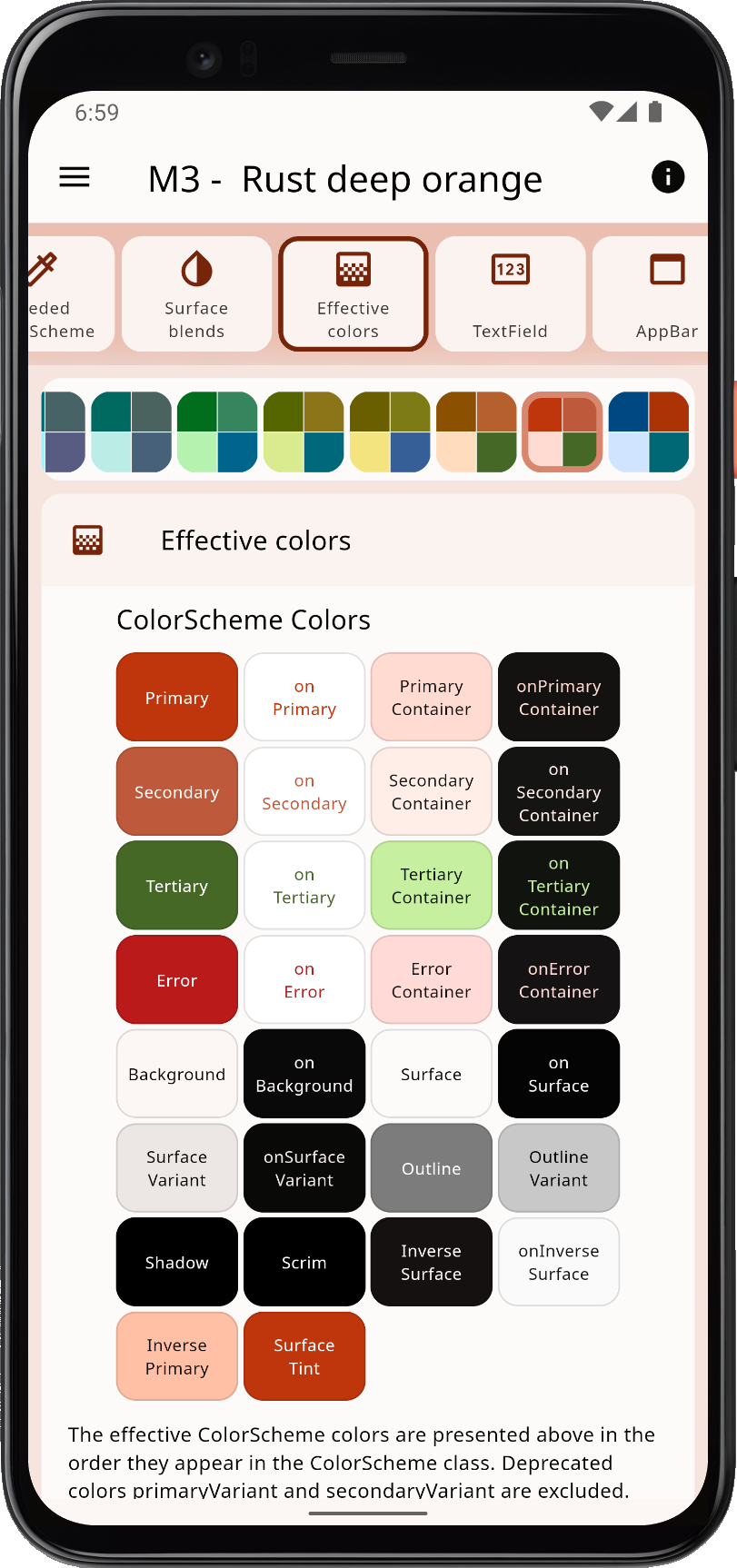 |
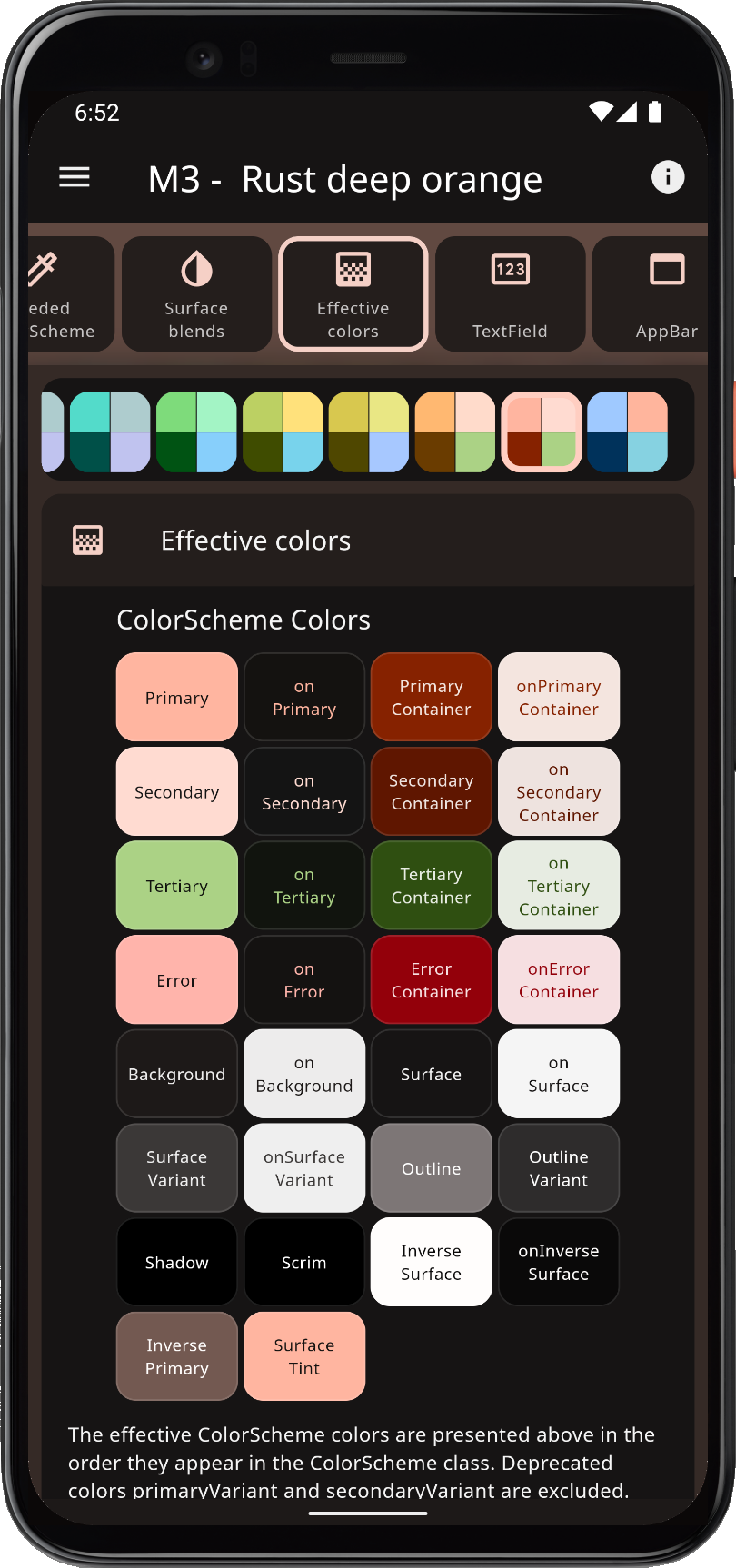 |
FlexColorScheme has many advanced coloring features, like using surface alpha blends. It also fully supports Material-3 based ColorSchemes, including seed generated ColorSchemes. It offers many advanced configuration options that you can use when you generate your ColorScheme from seed colors. You can e.g., make more saturated seed generated themes and themes with higher contrast. FlexColorScheme's advanced seeded ColorScheme offer features that are not available in Flutter directly. This includes using multiple key colors as seeds, custom minimum chroma levels and customized tone mapping to ColorScheme colors.
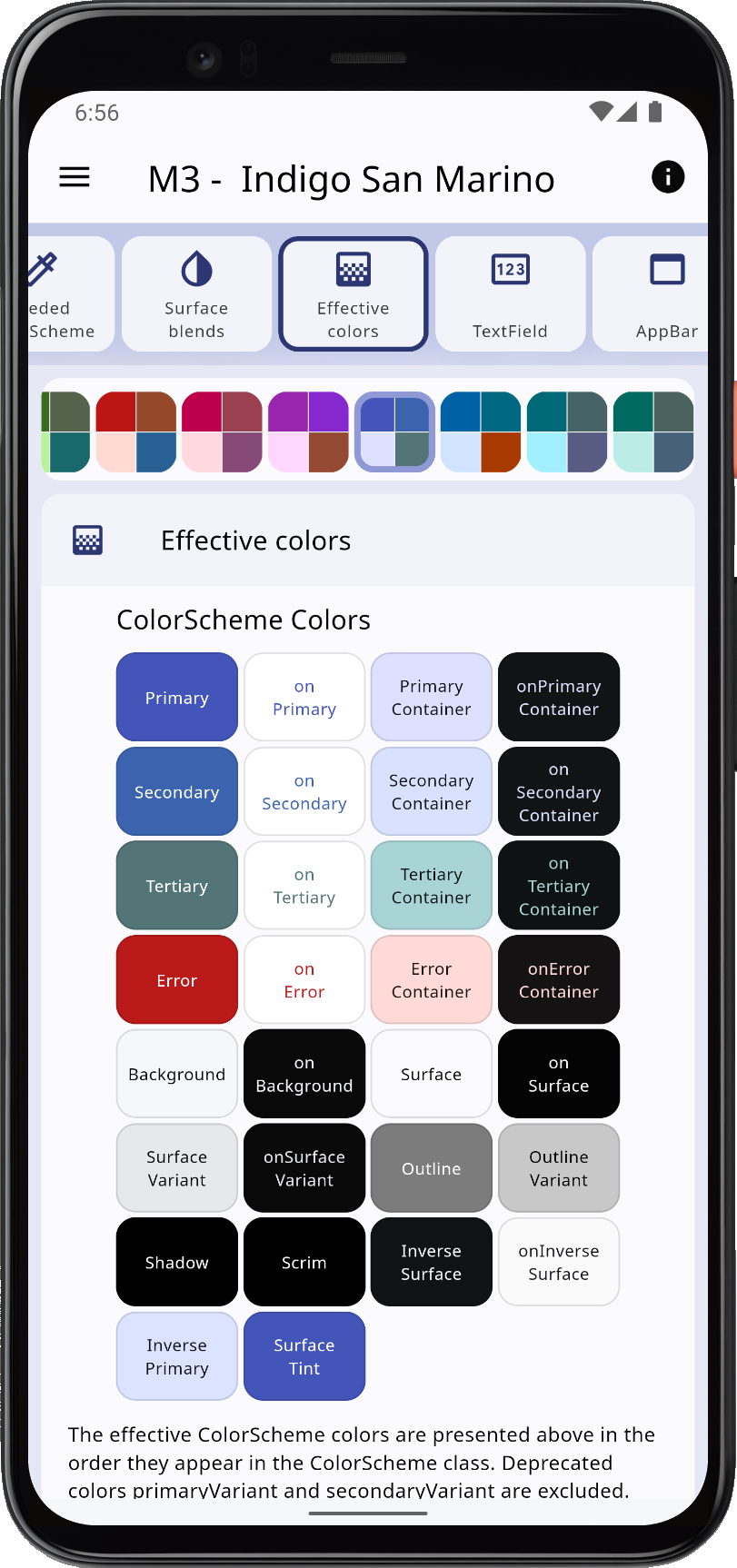 |
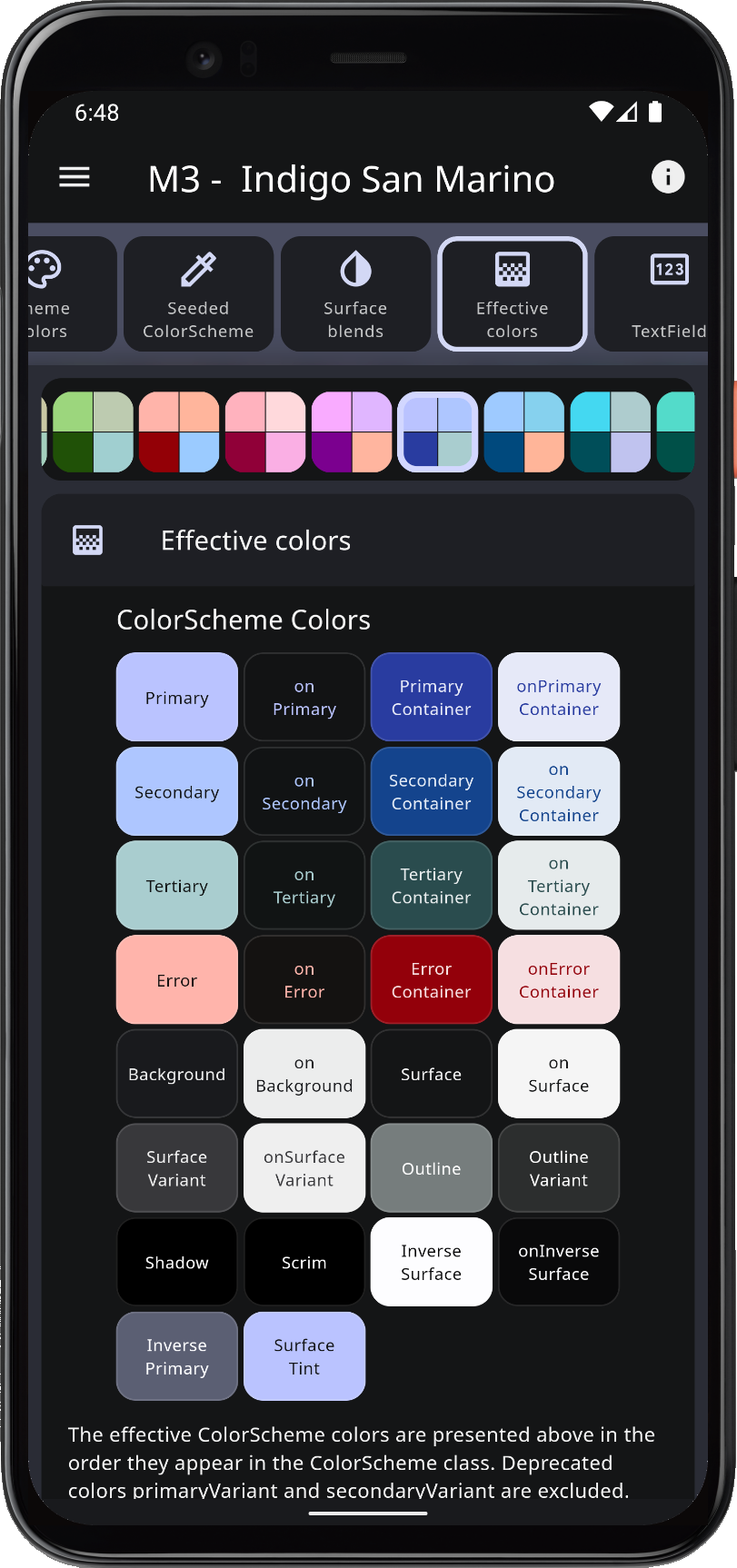 |
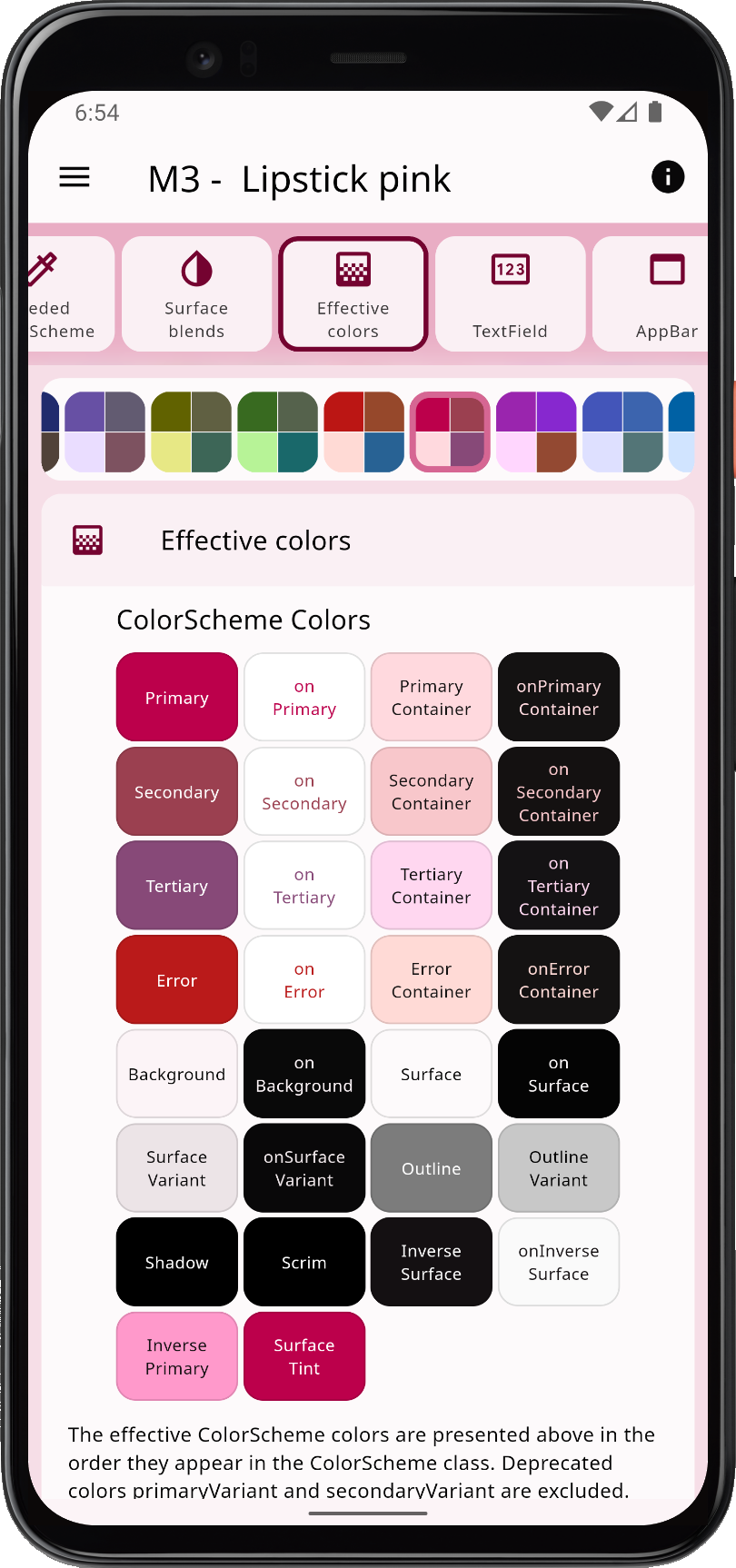 |
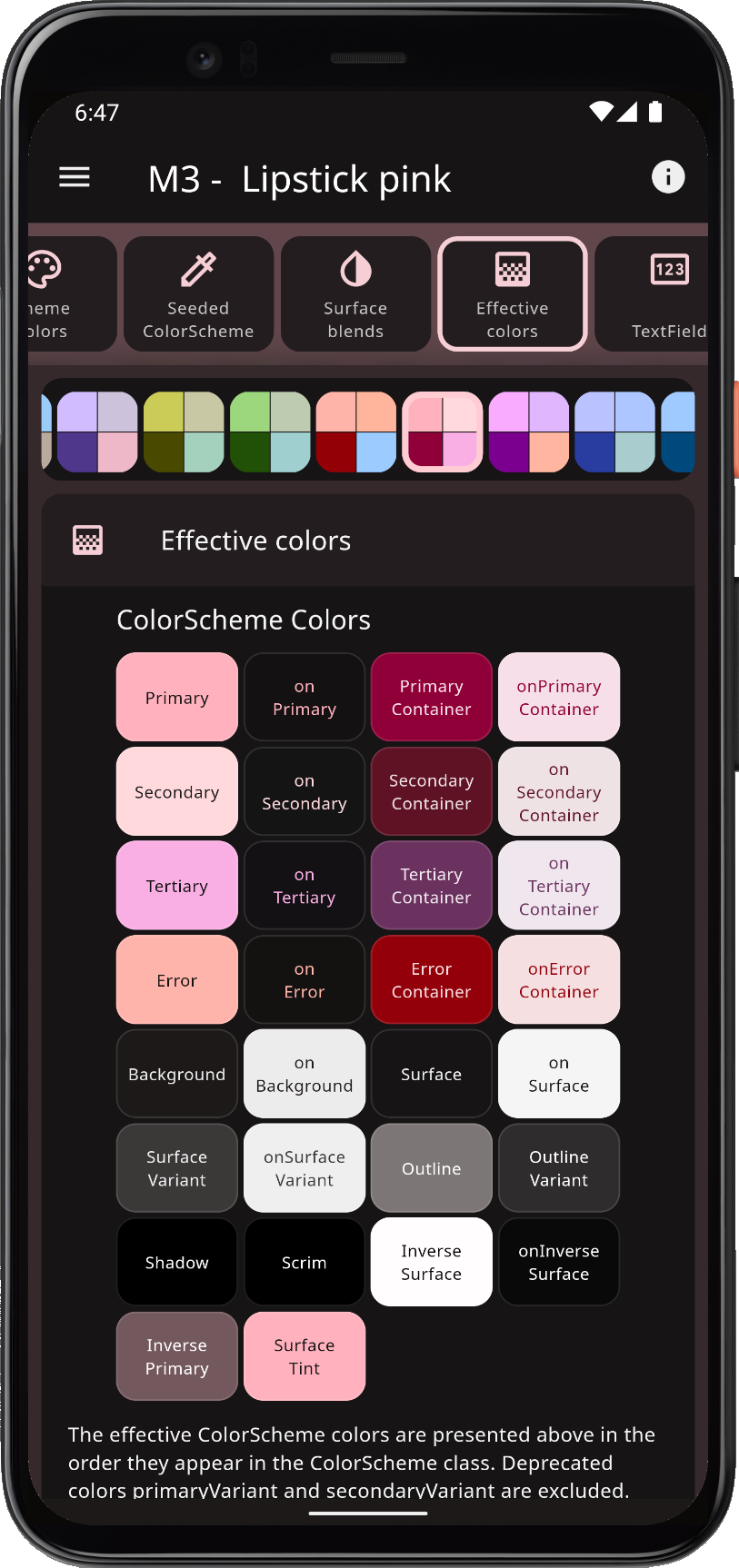 |
With FlexColorScheme component themes, you use simple flat property values. No need for verbose Flutter SDK component themes, for example ShapeBorder definitions on multiple widget themes to change their border radius. Component theming provides a large number of easy-to-configure options via direct properties. In most cases you can avoid using complicated and sometimes confusing WidgetState theming properties.
To use FlexColorScheme in your project, add the flex_color_scheme package to pubspec.yaml:
dart pub add flex_color_scheme or flutter pub add flex_color_scheme
Import the package to use it:
import 'package:flex_color_scheme/flex_color_scheme.dart';You can now start using FlexColorScheme based color schemes and theming in your application. A quick way to do so is to try one of the 55 built-in color schemes. They have enum values that you use to select which one to use as the theme for your application.
The package default example offers a heavily commented code guide on how to use key features in FlexColorScheme. The Examples chapter shows you how to try it. In the Tutorial you can learn more via five additional examples of increasing complexity.
Let's first setup FlexColorScheme in the default Flutter counter app. Create a new Flutter project, giving you the default counter-application. Add the FlexColorScheme import, after that we change one line of code, and add two lines to enable it in the default counter-application.
Here we use the Oh Mandy red color scheme, it is represented by enum value FlexScheme.mandyRed. Set the MaterialApp.themeMode to ThemeMode.system so that the device can control if the app uses its light or dark theme mode. You can then toggle the theme mode by changing mode on the used device.
Assign FlexThemeData.light to the app's theme property, which is the application's light theme definition property, and FlexThemeData.dark to darkTheme.
For both FlexThemeData dark and light we set the scheme property to FlexScheme.mandyRed to use the same Oh Mandy red predefined scheme colors in both theme modes. We then get matching light and dark themes based on the built-in scheme's color definitions.
The three line modified MaterialApp, of the Flutter default counter-application becomes:
class MyApp extends StatelessWidget {
const MyApp({Key? key}) : super(key: key);
@override
Widget build(BuildContext context) {
return MaterialApp(
title: 'Flutter Demo',
// The Mandy red, light theme.
theme: FlexThemeData.light(scheme: FlexScheme.mandyRed),
// The Mandy red, dark theme.
darkTheme: FlexThemeData.dark(scheme: FlexScheme.mandyRed),
// Use dark or light theme based on system setting.
themeMode: ThemeMode.system,
home: const MyHomePage(title: 'Flutter Demo Home Page'),
);
}
}This gives us a counter-application that looks like this:
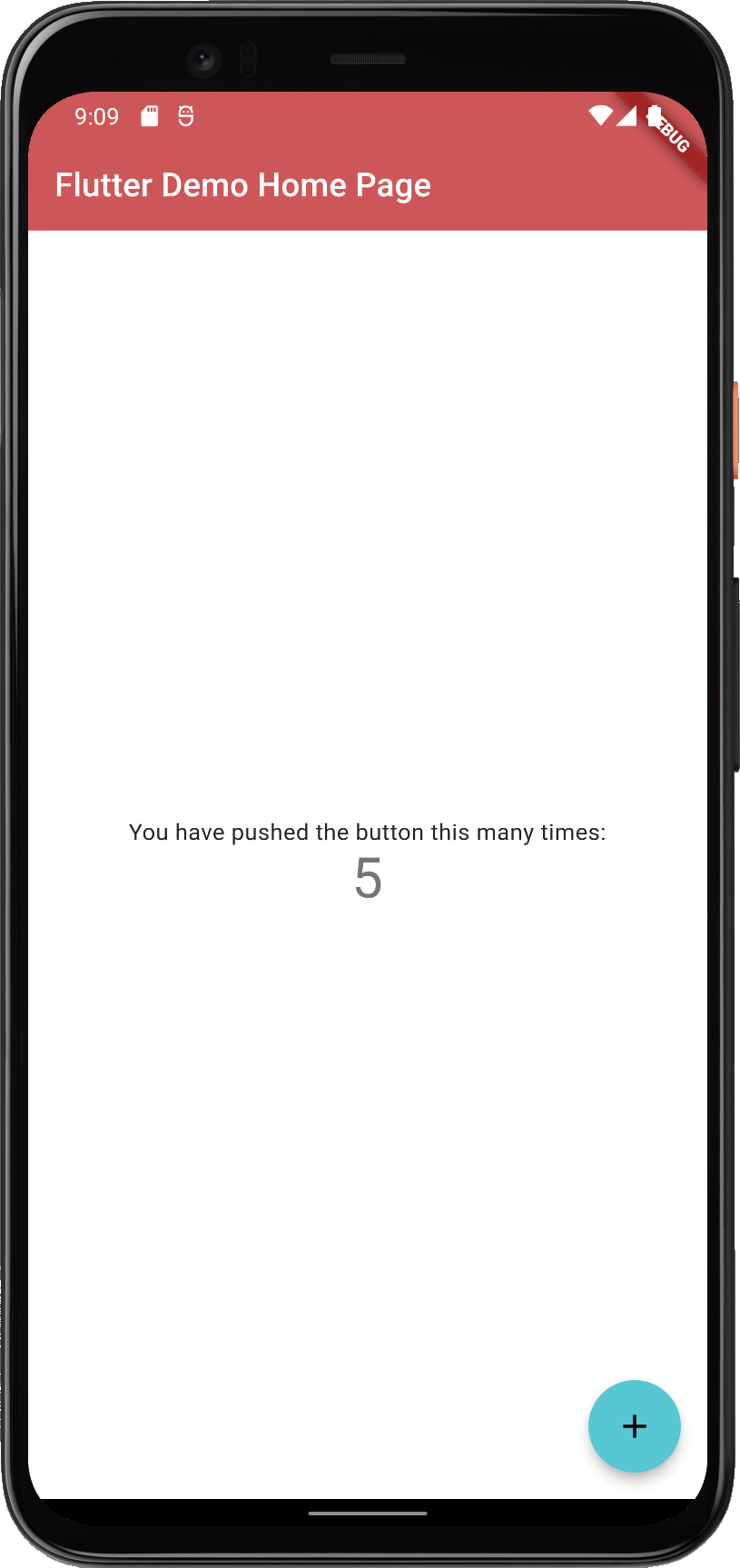 |
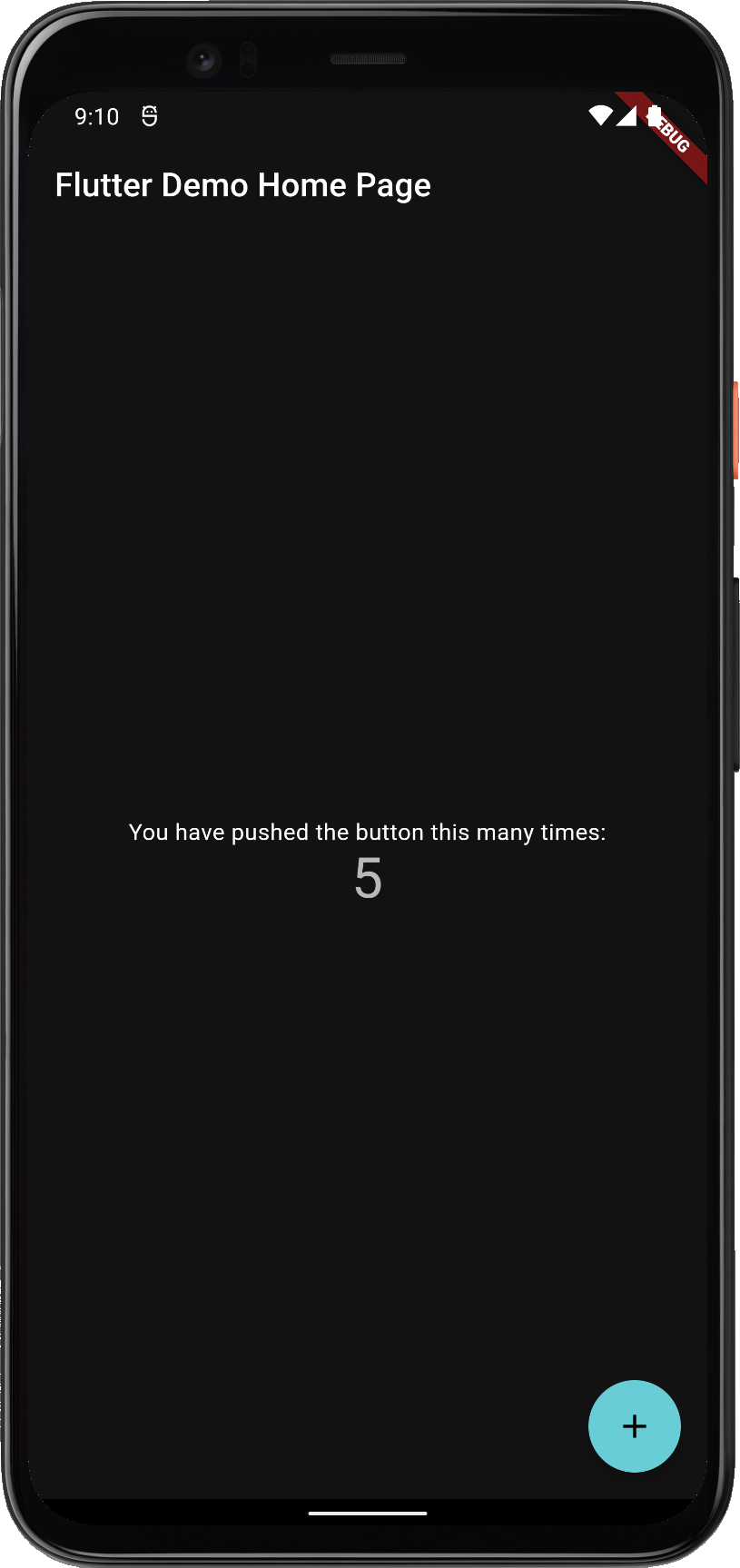 |
FlexColorScheme in Material-2 mode applied to the standard Flutter counter template
Not as exciting as the images shown above. That is because the basic counter-application uses very few features and widgets, so it does not present the results very well.
The included examples contain placeholder user interface to better demonstrate the results. The used UI demonstration code in the examples is not relevant to using FlexColorScheme, it is only there to present the results.
For more information and tutorials on how to use FlexColorScheme, please see its documentation site at docs.flexcolorscheme.com. It contains additional getting started info, extensive tutorials, key API walkthrough and even general Flutter theming advice and guidance. The documentation site is powered by docs.page from Invertase. Complete generated package API documentation is also available.
To make it even easier to configure and setup FlexColorScheme, it comes with a WEB companion app called the Themes Playground.
The Themes Playground is a useful tool to find FlexColorScheme themes and settings you like. You can use it to discover what you can do with FlexColorScheme. The playground persists all its settings. You can reset settings back to their default values, so you can always start over if you get lost in all the configuration possibilities.
The most useful and popular feature of the Playground is that it can generate FlexColorScheme API setup code needed to produce the shown active theme configuration. The themed style of the app itself, and the same styled demo apps shown in its theme simulator, is what you get when you copy the theme config code to your app, and use it with the FlexColorScheme package.
In Themes Playground you can visually configure your theme and copy its setup code.
If you use the code view panel side-by-side, as you change settings, the Playground modifies the code as you change settings. This is a fun way to get familiar with the API.
Viewing API configuration and its updates as you change setting in Themes Playground.
The latest Themes Playground build can be used as a web app here. For guidance on how to use the Themes Playground, please read the Themes Playground chapter available in the documentation site.
Beware, fiddling with all the different themes and settings can be quite fun and addictive, happy theming! 💙
The Themes Playground application is open source and bundled with the FlexColorScheme package in the example folder. In its GitHub repository you can find it here.
The Playground app is also the last step in the package tutorial series. The tutorial goes through its main used features that are relevant to using FlexColorScheme, and features that differ from the previous examples. It does not go through all the details of the application. You are welcome to study its source code for more insights and inspiration. It is on purposes a bit excessively commented. The tutorial also briefly talks about its background, design choices and limitations.
There are Theme Playground version builds corresponding to the last major releases of the FlexColorScheme package available. For Version 7 there are also Playground builds for the different minor releases.
You should use the same major version of Themes Playground as the flex_color_scheme package you are using. With version 7 and 8, you should prefer to match the minor version too.
| Name | Version | Link |
|---|---|---|
| V8.1 | V8.1.0 | https://rydmike.com/flexcolorscheme/themesplayground-latest |
| V8.0 | V8.0.2 | https://rydmike.com/flexcolorscheme/themesplayground-v8-0 |
| V7.3 | V7.3.1 | https://rydmike.com/flexcolorscheme/themesplayground-v7-3 |
| V7.2 | V7.2.0 | https://rydmike.com/flexcolorscheme/themesplayground-v7-2 |
| V7.1 | V7.1.2 | https://rydmike.com/flexcolorscheme/themesplayground-v7-1 |
| V7.0 | V7.0.5 | https://rydmike.com/flexcolorscheme/themesplayground-v7 |
| V6 | V6.1.1 | https://rydmike.com/flexcolorscheme/themesplayground-v6 |
| V5 | V5.1.0 | https://rydmike.com/flexcolorscheme/themesplayground-v5 |
| V4 | V4.2.0 | https://rydmike.com/flexcolorschemeV4Tut5 |
NOTE!
If you use a higher version of a WEB build and try to load a lower version again with the same browser, it will most likely fail and not load. This happens because older and newer builds run on the same domain and share the same browser local storage file. This allows newer versions to load data configured in older versions. However, older versions may not understand some data stored and inserted by the newer versions and they will fail. You can get the web build for an older version to start again by clearing stored browser data:
"Settings" → "Delete browsing data..." → "Cookies and other site data".
You do of course lose any config you had used then. This issue could be fixed, but would require updating rebuilding the old builds and there are currently no plans to do so.
Version 8.0.0 and later uses a new local storage name to avoid this issue, so it will not conflict with V7 and older versions. There are few storage settings in V8 that are backwards compatible anyway.
You can also build Windows, macOS or Linux desktop versions of the Themes Playground, it is highly recommended, as it runs much smoother and nicer than the WEB build. The Themes Playground app is bundled with the package GitHub repository as Example 5. If you need a Themes Playground companion build for a specific older FlexColorScheme version, you can download a ZIP bundle from the GitHub repo for any past release here.



